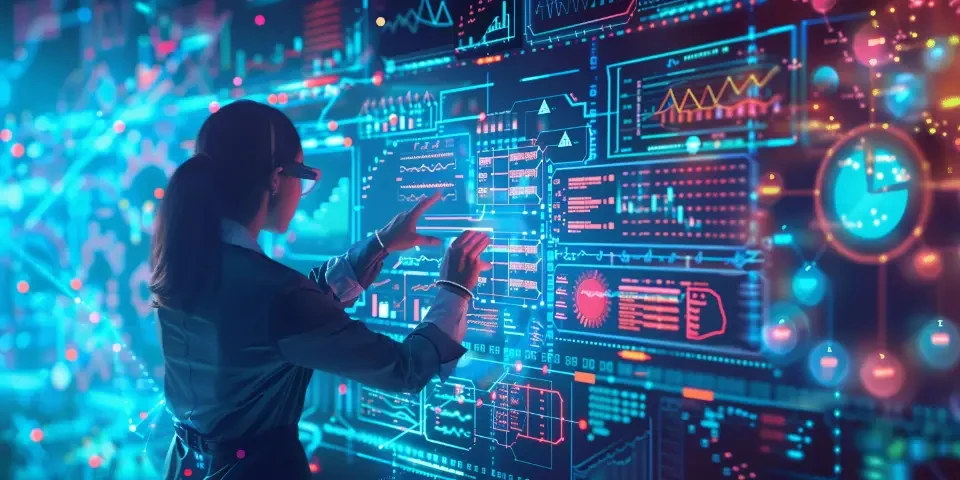Unveiling Artistic Masterpieces AI Reveals Hidden Paintings in Famous Artworks
Art conservation and restoration have always been challenging fields, where experts strive to understand and preserve the hidden secrets held within famous art pieces. However, thanks to advancements in technology, particularly artificial intelligence (AI), these secrets are now being unveiled like never before. AI has become a powerful tool in revealing hidden paintings in famous artworks, shedding light on the intricate details and underlying layers that were previously unknown. In this article, we will delve into the fascinating world of AI-assisted art restoration and its implications for the art community.
The Rise of AI in Art Restoration
AI has revolutionized the art world in numerous ways, from creating art to analyzing and conserving existing masterpieces. With the help of deep learning algorithms, AI can now unravel hidden paintings beneath the surface, making the restoration process more accurate and efficient. By analyzing X-ray and infrared images of the artworks, AI algorithms can discern the original strokes and colors used by the artist, even if they have faded or been covered by centuries of subsequent work.

Capitalizing on Neural Networks
One of the key technologies employed in AI-assisted art restoration is neural networks. These networks, inspired by the human brain, are trained on vast amounts of data to recognize patterns and make informed predictions. By inputting images of an artwork into a trained neural network, AI algorithms can reconstruct and visualize the hidden layers, augmenting the work of art restoration experts.
Challenges and Limitations
While AI has been transformative in the field of art restoration, it is not without its challenges and limitations. One of the main challenges is ensuring the accuracy of AI-generated predictions. Although neural networks have proven to be effective in revealing hidden paintings, there is always a level of uncertainty involved. It is crucial for art experts to collaborate with AI systems, guiding and validating the results to ensure the restoration process remains faithful to the original artwork.
The Impact on Art History
The discoveries made by AI in uncovering hidden paintings have the potential to reshape art history. With each revelation, art historians gain a deeper understanding of an artist's technique, the historical context, and the evolution of artistic styles. By comparing and contrasting the hidden layers across different artworks, AI allows for a more comprehensive analysis and interpretation of an artist's body of work.
AI vs. Traditional Restoration Techniques
When comparing AI-assisted art restoration with traditional techniques, several advantages become apparent. AI can analyze and interpret vast amounts of data in a short period, accelerating the restoration process considerably. Additionally, AI algorithms are not influenced by subjective biases that restoration experts may bring to their work. However, it is important to note that AI should not replace the expertise and creativity of human conservators but rather complement their skills, augmenting their capabilities.
Frequently Asked Questions (FAQs)
Q: Can AI restore any kind of artwork?
A: AI can restore a wide range of artworks, including oil paintings, watercolors, and drawings. However, the efficacy may vary depending on the condition and the complexity of the artwork.
Q: How does AI detect hidden paintings?
A: AI uses advanced algorithms and neural networks to analyze X-ray and infrared images, enhancing the visibility of hidden layers and providing insights into the original artwork.
Q: Are there any ethical concerns regarding AI-assisted art restoration?
A: Ethical concerns mostly arise when AI is used to alter or modify an artwork. However, when applied in restoration, AI serves as a tool to assist art experts rather than overshadow their decision-making.
Conclusion
The emergence of AI in the field of art restoration has unlocked new dimensions in uncovering the hidden secrets of famous artworks. By using neural networks and analyzing X-ray and infrared images, AI algorithms can reveal remarkable details that were once inaccessible to the naked eye. However, it is essential to strike a balance between technology and human expertise, ensuring that AI remains a valuable tool in the hands of art restoration professionals. The marriage of AI and art preservation promises a future where the mysteries of artistic masterpieces will continue to be unveiled, enriching our understanding of the past and inspiring future generations of artists.
Explore your companion in WeMate